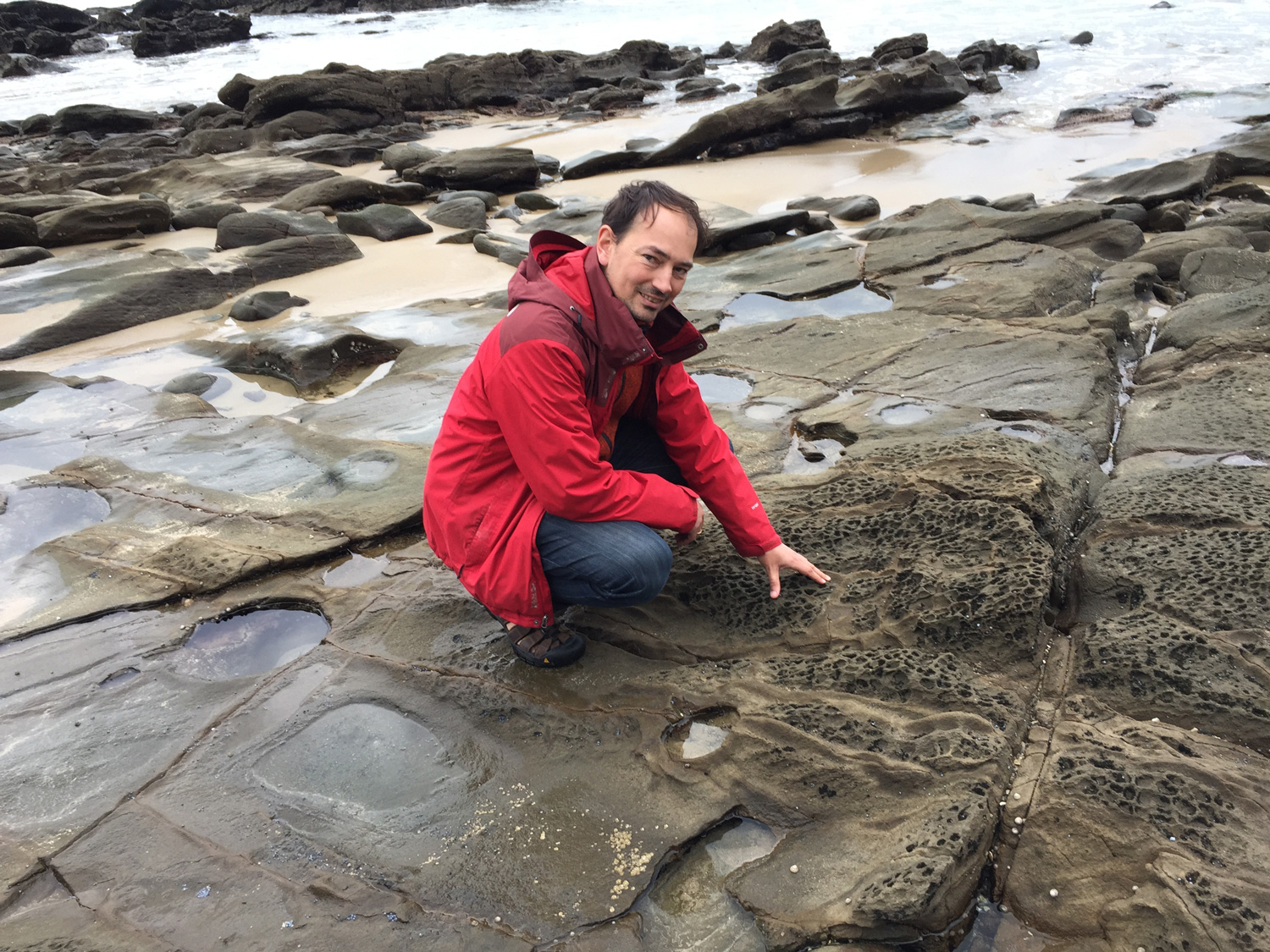
Geochemist Thomas Zack is currently on sabbatical in Australia.
An interdisciplinary team of scientists led by scientists from Utrecht University with participation from University of Gothenburg have found new clues about how deep life may extend into the Earth’s interior near the deepest place on our planet – the Challenger Deep in the Pacific Ocean. In their paper published in the Proceedings of the National Academy of Sciences, they examine complex organic molecules that have been trapped within rock fragments brought to the seafloor by massive mud volcanoes.
Life below our feet
We can see with our own eyes that life is everywhere on the surface of the Earth. We also know that there is even life that is smaller than we can see with the naked eye, such as bacteria. But what we don’t think much about is the life that is deep below our feet. Only within the past couple of decades have we been able to start putting constraints on the limits of life on Earth. However, two largely unanswered problems are the depth limit for life and the potential energy sources that can support microbial life in the absence of photosynthesis deep within the Earth.
Mud volcanoes: towards the Limits for life
The massive mud volcanoes that sit above the Izu-Bonin-Mariana subduction zone, where the Pacific Plate is dragged under the Philippine Sea Plate, bring rock fragments from ~ 20 km depth up to the seafloor. Fuelled by cold fluids that are released as the down-going plate heats up, rocks deep below the mud volcano undergo chemical reactions with the fluids during a process called serpentinization. This process is affiliated with life at mid-ocean ridges and may feed microbial life that does not depend on light for its main energy source. In their hunt for tell-tale signs of life, the scientists have analysed rock fragments that have been carried by the mud volcanoes from as deep as 20 km within the Earth. Using state-of-the-art analytical techniques they found organic matter encapsulated within the clasts.
“You could think of this organic matter trapped within a rock a bit like a message in a bottle.” says Oliver Plümper, Earth scientist at Utrecht University and lead author of the paper.
Although Dr. Plümper and his colleagues cannot pinpoint the exact origin of the organic matter, chemical analysis of the constituents hint at microbial life deep within or below the mud volcano. This is consistent with calculations conducted by the authors using the currently known temperature limit for life, 122 °C, and the temperatures expected under the mud volcanoes, which suggest that life could exist as deep as 10,000 meters below seafloor. This is considerably deeper than other serpentinizing regions such as mid-ocean ridges and could have provided a sheltered habitat for life helping it to survive the more violent phases of Earth’s early history.
Oliver Plümper says “The mud volcanoes are a unique window into the deep subsurface and allow us to probe processes that are otherwise hidden from us. Finding the organic material within the rock clasts was very exciting as they may point to a deep biosphere below the mud volcanoes.”
The Gothenburg connection
“We were aware that those samples are special for almost a decade”, says Thomas Zack from the Department of Earth Sciences at the University of Gothenburg, whose PhD student Sonja Pabst, at that time at the Universität Heidelberg, Germany discovered what got the nickname “black serpentine”.
“However, it was only when Oliver Plümper and his team started to investigate the samples that solid data could get extracted”. Dr. Zack is by training a petrologist, and the focus of interest are usually minerals and rocks that tell stories of ancient mountains and climates.
“However, if something is so strikingly curious, you simply have to follow up a story wherever it brings you; in this case to the field of deep biosphere, and the only logical approach is inter-disciplinarity”. In Sweden, the deep biosphere is also a hot topic, with a team at Linnaeus University led by Henrik Drake is spearheading research on kilometre-deep evidence for life. It is no coincidence that Drs. Zack and Drake are planning their next projects together.
The findings were published in the journal Proceedings of the National Academy of Sciences of the United States of America (PNAS) on 10th of April 2017 by a team of researchers based at Utrecht University, University of Bonn, University of Leeds, University of Auckland and University of Gothenburg.
Publication details
Plümper O., King H.E., Geisler T., Liu Y., Pabst S., Savov, I.P., Rost D., Zack T. (2017) Subduction zone forearc serpentinites as incubators for deep microbial life. Proceedings of the National Academy of Sciences of the United States of America (PNAS)
Link to the article >>
Thomas Zack, Senior Lecturer
Department of Earth Sciences
thomas.zack@gu.se
At present Thomas Zack is in Australia, please use email to get in touch with him.
